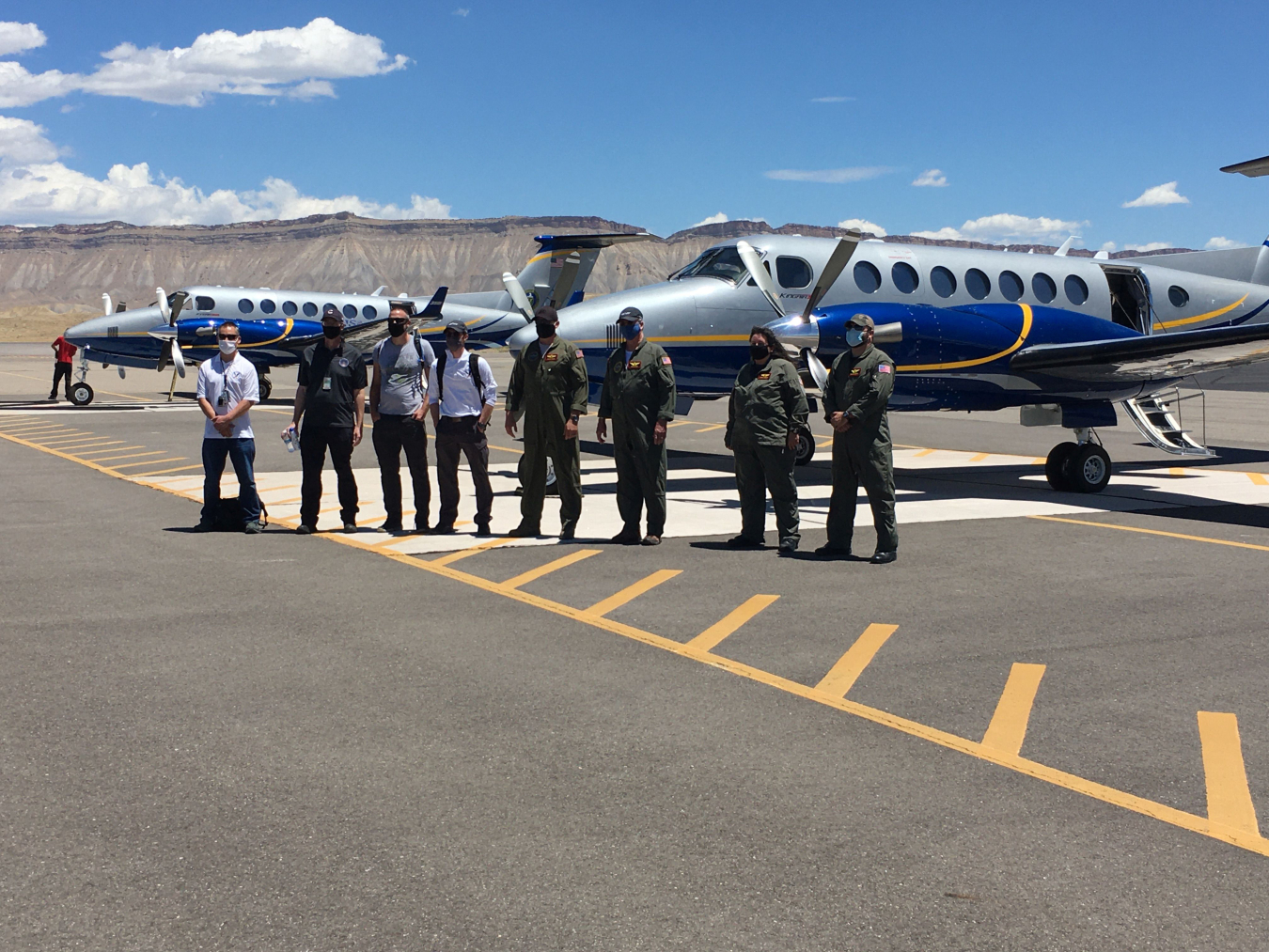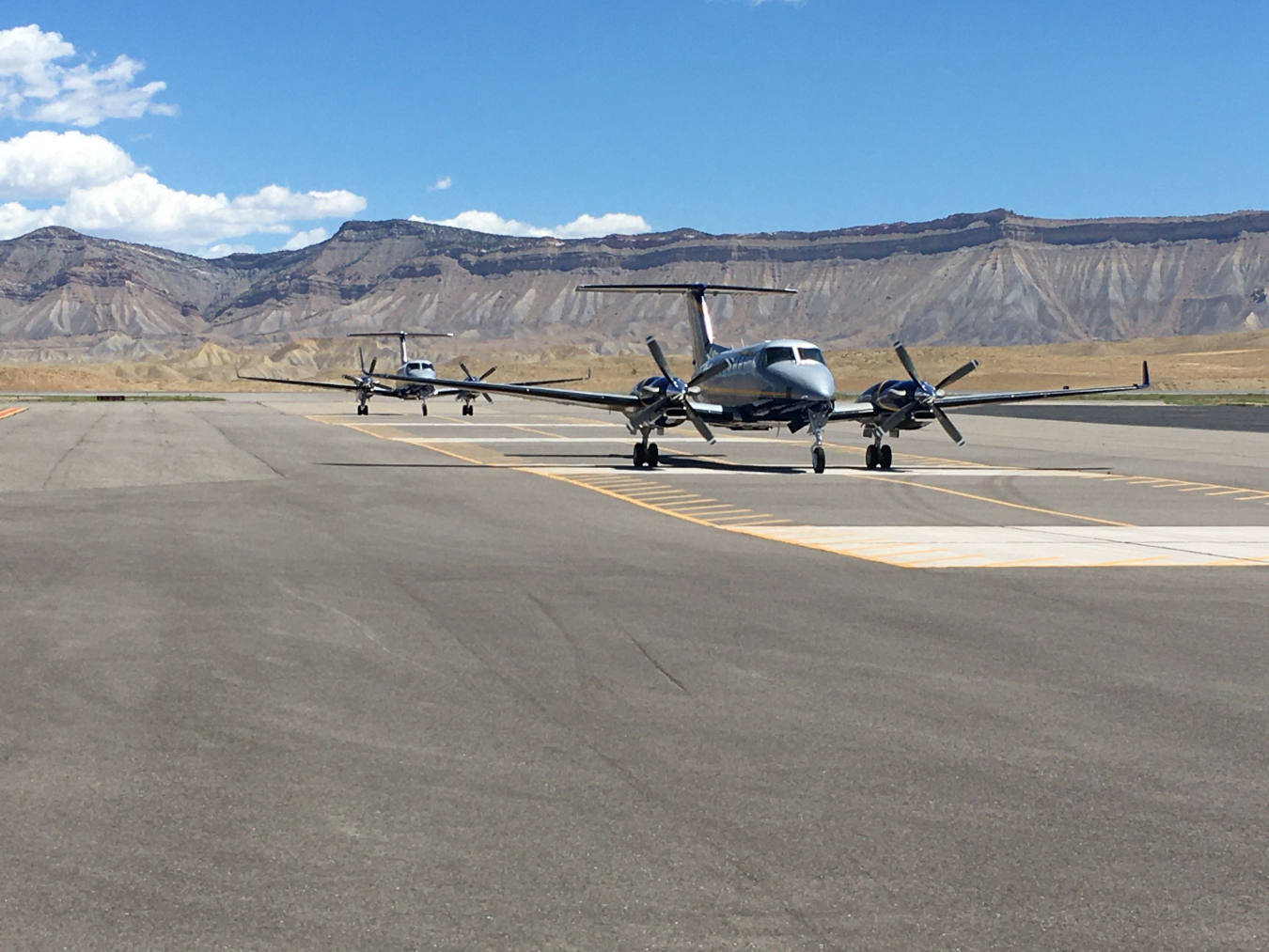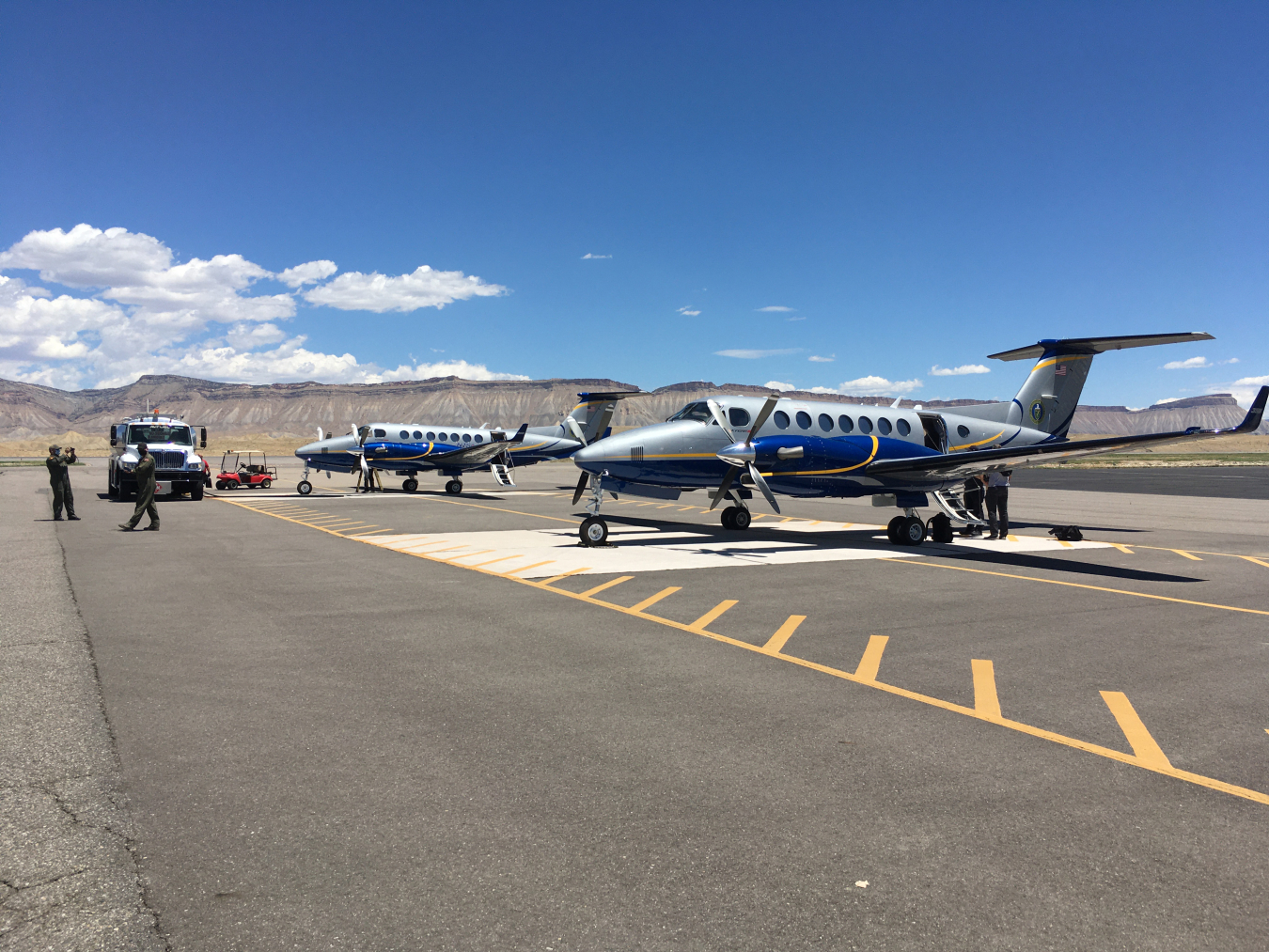NNSA pays a visit to LM’s calibration pads in Grand Junction, Colorado.
September 9, 2020
NNSA staff pose beside aircraft outfitted with radiation sensor systems at the Grand Junction, Colorado, airport.
National security is a term that is commonly associated with our military and intelligence communities, but it is also a priority of the U.S. Department of Energy (DOE) and two of the agency’s programs: the National Nuclear Security Administration (NNSA) and Office of Legacy Management (LM). On June 22, representatives from NNSA and LM worked together to further not only U.S. national security interests, but also the continued protection of human health and the environment.
LM manages a unique facility in Grand Junction, Colorado that has radiometric calibration pads to standardize radiation survey equipment. Such equipment includes the NNSA’s Aerial Measuring System (AMS). This technology is commonly used to conduct radiation assessments via helicopter or airplane. In recent years, the Nuclear Emergency Support Team (NEST) deployed this technology in support of national security efforts, such as conducting low-altitude flyovers of facilities used for major public events (such as the Super Bowl) to gather baseline information of naturally occurring radiation. Such information can then be leveraged by NEST to detect the existence of hazardous materials, such as a “dirty bomb,” or to catalog where radiation levels are normally elevated and of no concern. This is one component of NNSA’s expansive counterterrorism and counterproliferation efforts.
Certifying that this technology provides actionable and defensible data requires proper calibration — and this is where LM enters the picture.

NNSA aircraft taxi to the portion of the Grand Junction runway dedicated to calibration pads.
LM manages five calibration facilities throughout the United States, one of which is located at the Grand Junction Regional Airport (GJT) and is specifically designed for aircraft-mounted radiation sensor systems. This site houses five 30-foot-by-40-foot concrete pads containing known concentrations of potassium, uranium, and thorium minerals, which contain small amounts of naturally occurring radioactive material.
In addition to the airport calibration pads, LM also manages calibration facilities at the Grand Junction office site, as well as at sites in Grants, New Mexico; Casper, Wyoming; and George West, Texas. These facilities are located in regions where uranium-mining activity occurred in the past and continue to support the mining industry, although at a much lower activity level than years past. The facilities were also used to calibrate radiation sensors used during mill tailings remediation efforts. In addition to calibration pads, boreholes models are available to calibrate downhole geophysical well-logging equipment.
A significant amount of preparation takes place prior to any calibration. Days before the visit, LM and Legacy Management Strategic Partner (LMSP) staff must thoroughly clean the pads, using an industrial vacuum to remove all small debris, such as rock chips or discarded bolts, that may damage the turbines of visiting aircraft. A follow-up inspection also occurs on the day of the calibration event.

NNSA aircraft are parked on the Grand Junction calibration pads.
“Weather can also impact our use of the calibration pads. For example, wind can impact or disrupt calibration, so sudden gusts may delay the use of the facilities,” said David Traub, LMSP senior geologist and project lead. “Fortunately, it was a gorgeous day when NNSA visited.”
With all the proper conditions met and preparation protocols followed, a pair of Beechcraft extended-range models — each operated with a combined crew of NNSA technical and flight staff — were approved to touch down at GJT and taxi to the portion of the runway dedicated to calibration pads. The aircraft came from different NNSA sites — Nevada National Security Site locations at Andrews Air Force Base in Washington, D.C., and Nellis Air Force Base in southern Nevada — allowing for a rapid regional response, if necessary.
“I always love learning more about the details and nuances of the many mission areas we have in our portfolio, and this event was a fantastic example of how we support others with the calibration pads,” said Paul Kerl, Uranium Mill Tailings Radiation Control Act and Nevada Offsites supervisor for LM and office manager for the Grand Junction Field Support Center. “In this case, calibrating equipment and instrumentation associated with the AMS were essential to screening national security with our NNSA partners.”
The June 22 calibration event represents the continuation of a vibrant partnership between NNSA and LM. This specific event sparked several follow-up conversations between the agencies about other potential collaborations in the future.

